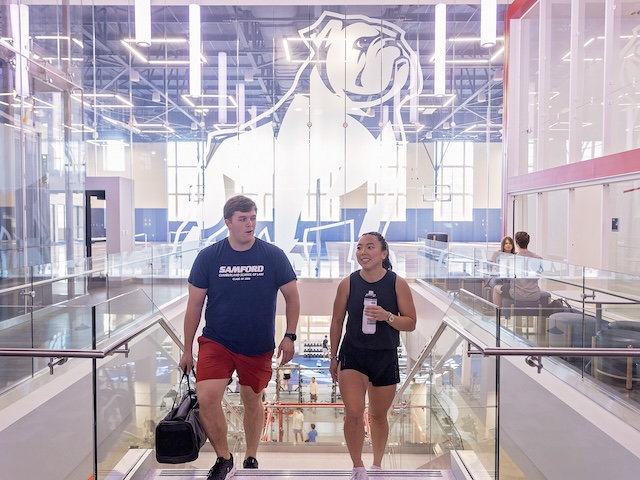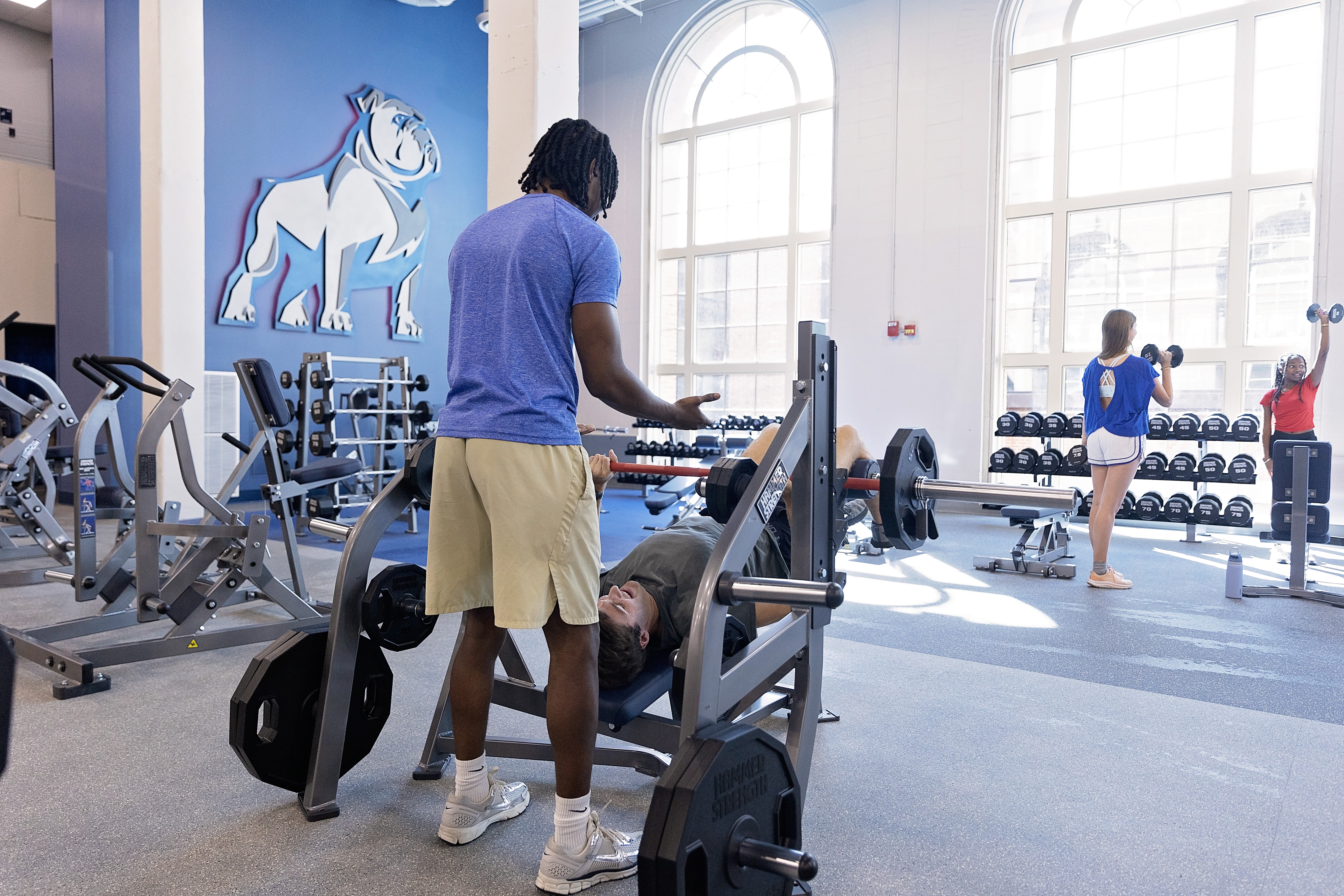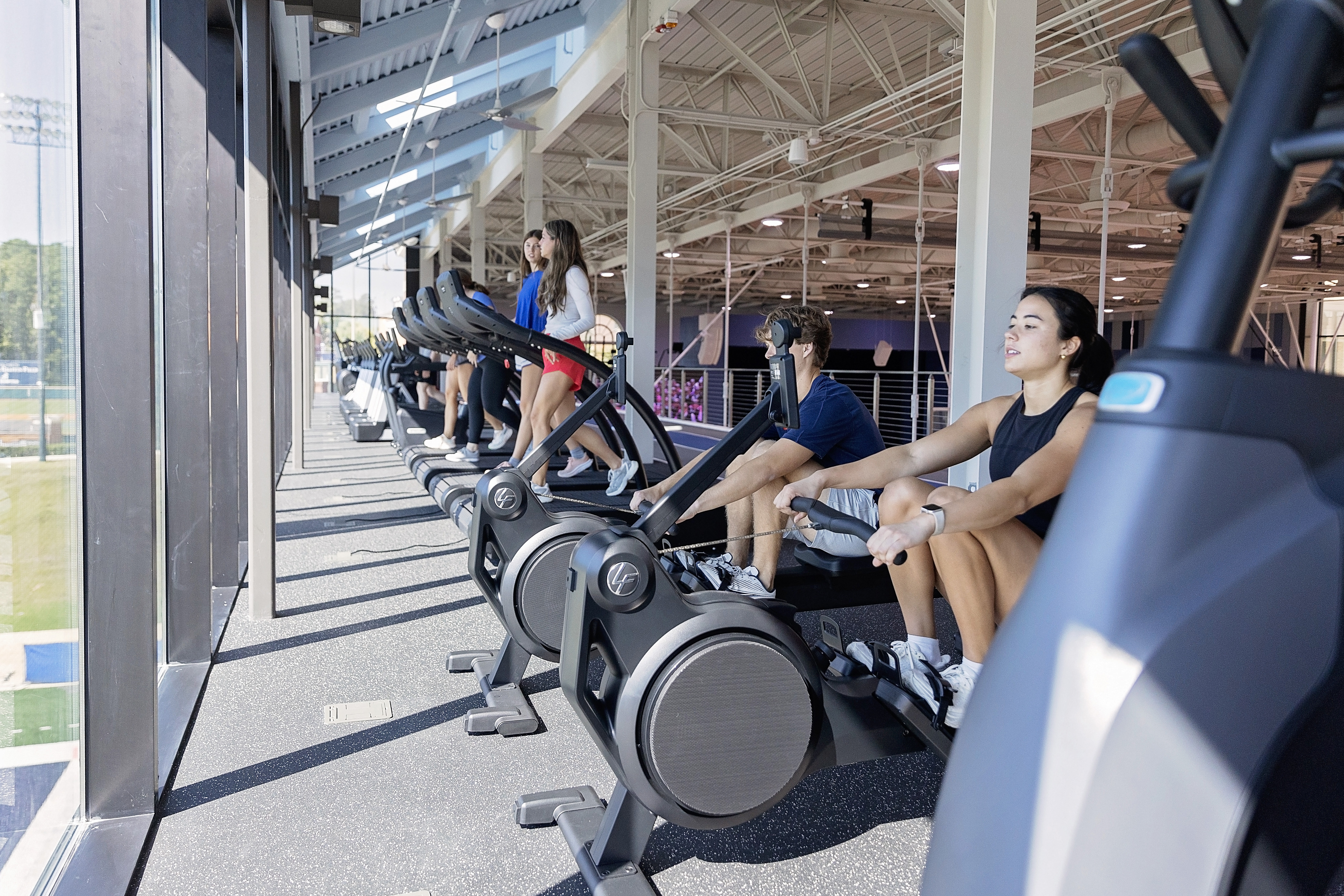
Samford University celebrated the debut of its 165,000-square-foot Campus Recreation, Wellness & Athletics Complex—an $85 million project that combines world-class fitness amenities with communal spaces for students and employees.
“This proudly stands among the best such facilities in the nation,” said Samford President Beck A. Taylor during today’s ribbon cutting. “It's a game-changer for Samford.”
The massive four-story complex features basketball, racquetball and pickleball courts, along with studios for spin classes, yoga, pilates, Zumba and barre core. There are tonal strength stations, free weights, cardio and circuit training, turf areas, billiards, an elevated jogging track, a coffeehouse and 24-hour market. There’s also an Esports lounge designed to launch the university’s new video gaming program.
“This is the first building block of a very ambitious plan to continue elevating Samford as a top residential university in the country,” said Taylor, only weeks after the university announced a 16th consecutive year of record-breaking enrollment. “Our students and families are choosing Samford in record numbers, because we're all about residential experience.
“Above all, this complex is a place for community. Obviously, students will use the equipment, but they'll have the opportunity to run into each other, to encourage one another, and to study for an exam between an intramural game. This is going to be a real hub in the West Campus area.”
Senior U.S. District Court Judge Karon O. Bowdre (inactive), chair of the Samford University Board of Trustees, recalled how nearly two years ago Taylor and trustees began shaping a vision to enrich campus life. That master plan, known as Samford Horizons, includes a reimagined dining experience, four new residence halls scheduled to open in 2025, a 550-space parking deck, and today’s debut of the high-end recreation facility, which coincides with Samford’s annual Family Weekend.
“I am delighted that so many students are here to share in this celebration,” Bowdre told the audience. “This is your day, and we are thrilled to be here with you.”
James Jefferson, Samford’s student government president, toured the expansive complex and proclaimed it a milestone moment. “Years from now,” he said, “we will remember this day and how we felt with the new possibilities opening for us.”
Nick Madsen, executive director of campus recreation, was part of a leadership team that evaluated recreational facilities at more than 20 major universities to inform Samford’s design.
“We were seeking to understand what those schools liked, what they didn’t like, and what they wished they had in their facilities,” Madsen said. “We researched a lot of different universities to see what they had, and we wanted ours to be the best. We want this to be a showcase, and it is the best around the Southeast. This facility is going to bring students here.’
The complex will soon employ 100 student workers, Madsen said, doubling the student staff from the previous recreation center.
One emphasis was constructing studios large enough to accommodate Step Sing groups that previously staged some of their practices off-campus. “This facility has a ton of space, and it’s smartly designed with multiple workout areas,” Madsen said. “We wanted to give everyone the opportunity to find that little pocket area where they feel comfortable. Sometimes facilities just have one huge workout space, which can be very intimidating.”

Encompassing intramural sports, events and lounge spaces, along with renovations to the CARES counseling facilities, the complex reveals a purposeful blueprint encouraging the holistic wellness of Samford students in mind, body and spirit.
“By Samford really investing in a wellness district with facilities and resources, we are sending a message to students that their health matters and the best health is integrated health,” said April Robinson, assistant vice president of student development and support. “Samford's mission is to nurture persons, and we are committed to nurturing the whole person.”
Numerous Birmingham-based and national firms participated in the construction project, including Davis Architects, a firm that has guided Samford’s campus design since the 1950s. “Davis Architects created a dynamic plan that integrates the old and the new into our campus aesthetic while transforming the interior of the buildings to meet the needs and desires of our students,” Taylor said.
In an effort to manage energy consumption, reduce water usage, improve indoor air quality and improve environmental performance, Samford is pursuing LEED certification for the Campus Recreation, Wellness and Athletics Complex. “We hope this building speaks not only to the wellness of our students, but also to our commitment to a well world,” Taylor said. “It will be a few months before our certification is confirmed, but we are saving a place right inside the front door for Samford’s new LEED plaque.”
The facility includes various spaces recognizing individual and corporate supporters of the university, including a stunning new footbridge spanning the north end zone of Pete Hanna Stadium, named in honor of Samford distinguished graduate Dr. Buddy Larry Thorne.



